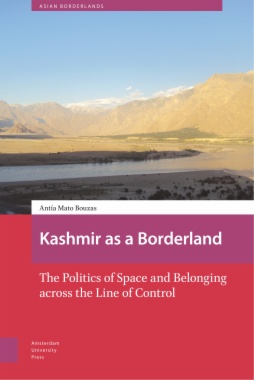Kashmir as a Borderland: The Politics of Space and Belonging across the Line of Control examines the Kashmir dispute from both sides of the Line of Control (LoC) and within the theoretical frame of border studies. It draws on the experiences of those living in these territories such as divided families, traders, cultural and social activists. Kashmir is a borderland, that is, a context for spatial transformations, where the resulting interactions can be read as a process of ‘becoming’ rather than of ‘being’. The analysis of this borderland shows how the conflict is manifested in territory, in specific locations with a geopolitical meaning, evidencing the discrepancy between ‘representation’ and the ‘living’. The author puts forward the concept of belonging as a useful category for investigating more inclusive political spaces.
- Cover
- Table of Contents
- Acknowledgements
- Introduction
- 1. Kashmir: The Idea and its Parts
- Making the princely state: fixing borders and building a power centre in the Kashmir Valley
- Partition and the importance of taking sides
- Territorial integrity and transformation of the border space
- Conclusion
- 2. Conceptualizing a Borderland Approach to Kashmir
- The borderland
- Border roads: the contours of making state space
- Violence, social diversity, and fragmentation
- The Kashmir borderland as a distinct political space
- Conclusion
- 3. Urban Areas Near the LoC (I)
- The ‘Kashmir Issue’ in Srinagar and Muzaffarabad
- Militarization of the urban
- Srinagar: the epicentre of conflict
- Muzaffarabad: the place of refuge and support of the Kashmir cause
- Conclusion
- 4. Urban Areas Near the LoC (II)
- The ‘Kashmir Issue’ in Skardu and Kargil
- The specific position of Skardu as a non-Kashmiri and non-Pakistani location
- Kargil and the borders of the nation
- Conclusion
- 5. The Line… the People
- The opening of the LoC
- Border immobilities: separation across Kargil (Ladakh) and Baltistan
- Border work: normalizing the state space
- Conclusion
- Conclusion
- The Politics of Belonging in the Kashmir Borderland
- The case of Ahmed
- Understanding belonging: space and identity
- Belonging across borders as claims to recognition
- Politics of belonging and world (b)ordering
- Acronyms
- References
- Index
- List of Maps and Images
- Map 0.1 Map of the Kashmir disputed territories
- Image 2.1 Cover of The Economist, 9 May 2011
- Image 2.2 Border area on the Indian side, Kargil
- Image 2.3 �Border area in Kargil, showing part of the Kargil-Skardu road
The shrine of Sher Ali is located at the rear on the top of the hill and Brolmo village is located below it.
- Image 2.4 �Amarnath, camp area for pilgrims, located next to a military camp
- Image 2.5 Sign about the Kargil War memorial
- Image 3.1 �Lal Mandi footbridge with the azadi (freedom) slogan, Srinagar 2014
- Image 3.2 �A view of Muzaffarabad city in September 2009.
- Image 4.1 �Skardu, August 2009
- Image 4.2 �Kargil, June 2011

